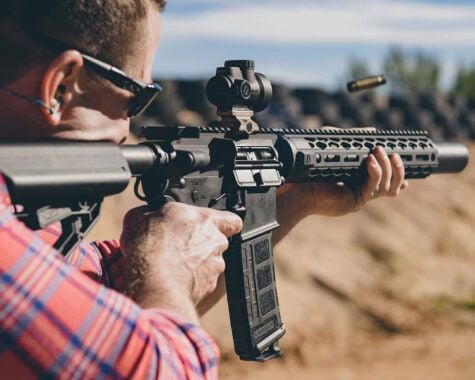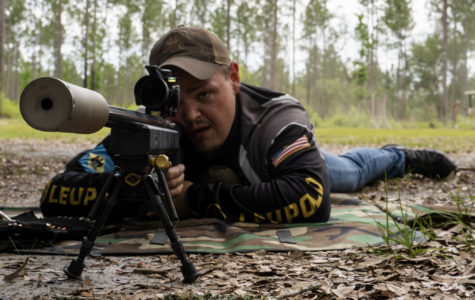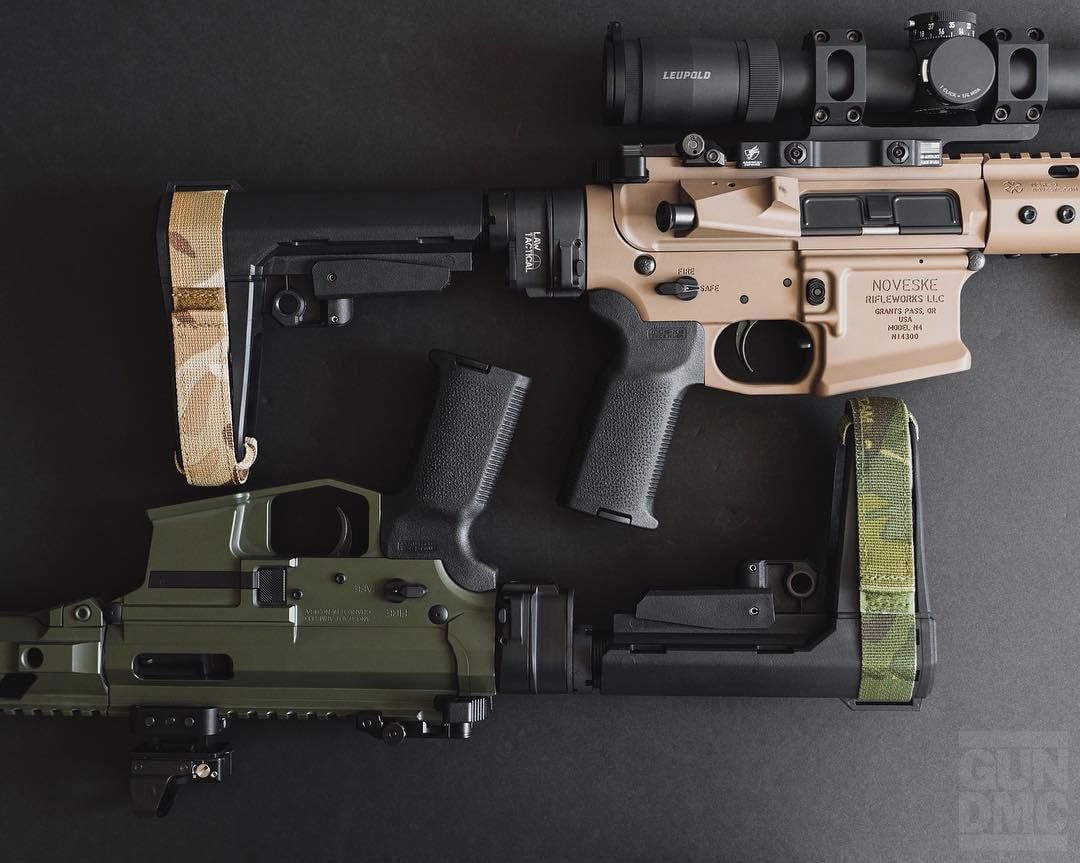
We recently sat down with Stephen Gutowski of The Reload in early 2022 to get updates on the pistol brace ban proposal, the proposed rule broadening the definition of firearm to ban so-called “ghost guns” and more.
Check out our previous interview with Gutowski to learn more about The Reload and why you should consider following him.
Q: Stephen, thanks for taking the time to join us. Congrats on a successful 2021. Can you give our readers the basics of what The Reload is?
Stephen Gutowski, The Reload – The Reload is an independent, reader-funded firearms reporting publication where we focus on sober, serious firearms journalism and analysis. I think 2021 was a successful year for us. It cemented our foundation and showed that the concept for a publication like this is a viable one. We had a lot of people who were willing to pay for the exclusive content, as well to help us grow as a publication so we could also offer a lot of free content that informs the public better about gun issues.
Q: I don’t think it’s a stretch to say there were some things that happened in 2021 that may have turned out differently without The Reload.
Stephen Gutowski, The Reload – Certainly. I think The Reload’s reporting had substantial impact in a number of areas, especially on Capitol Hill when it comes to the nomination of David Chipman, former ATF agent and current gun control activist. The Reload was able to do some investigating of his background and report on a number of troubling accusations from a number of his former colleagues, as well as their thoughts on his leadership style and how he would do as director.

We also did a lot of reporting on the situation at the NRA, with their bankruptcy filing that failed, and the hacking of their computer system by Russian ransomware hackers that revealed, unfortunately, a lot of personal information of staff at the organization. A lot of other publications didn’t follow up on that, so a lot of NRA staff were not even aware that their social security numbers or bank accounts had been leaked online until The Reload had done reporting on that.
Q: It seems like that in some cases, if The Reload isn’t covering it, it’s not simply being seriously covered…
Stephen Gutowski, The Reload – Yeah, I think that’s accurate, and that’s why The Reload is necessary. There’s just very little coverage dedicated to this topic in serious, journalistic pursuit. That’s a real problem because people need to have quality information in order to have informed decisions about things, whether it’s lawmakers or citizens. People need to have an understanding of what is going on.
Q: There’s a few issues I’ve not seen new info on lately. Can you clarify where we stand on proposed rules with stabilizing braces in 2022, as well proposed regulations relating to the identification of certain firearms?
Stephen Gutowski, The Reload – These are areas where the President can impose significant changes, because he does not have to go through congress for it…The math of the Senate made big gun control measures unlikely, but he is able to do more through Executive Actions, which is what these are.
They have finished going through the comment period and they have hundreds of thousands of comments on each of these proposals. The vast majority of them were negative. The ATF is now in the process of reviewing those comments, because they have to review them and put out a response.
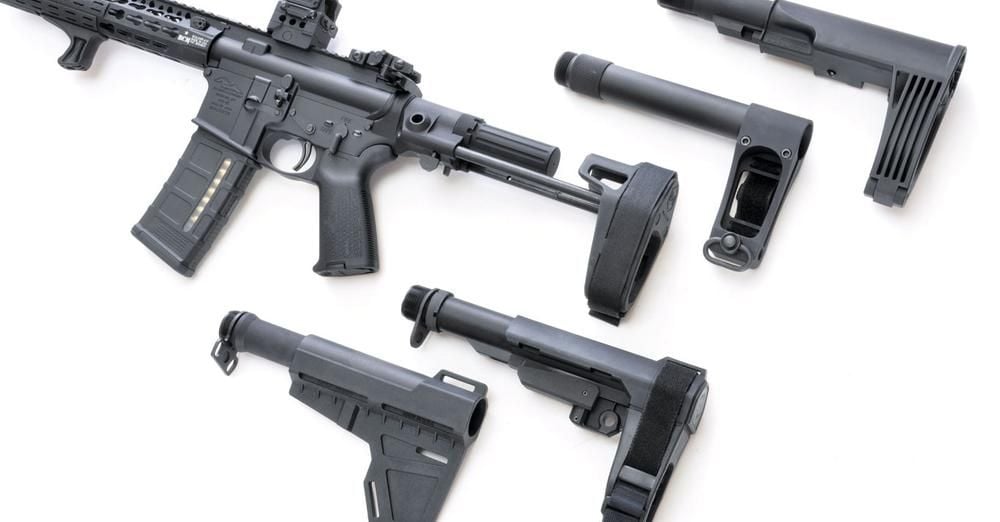
They may adjust the rule in one way or another, but I think that it is unlikely that they will pull either of these rules or adjust them in a way that will satisfy either the gun industry, gun rights activists, or many gun owners.
I think that these rules will go into effect, perhaps by the end of this year, and they will have, at least on paper, a very large potential impact. It will be interesting to see how the ATF deals with enforcing these things because the pistol brace could affect millions of people. It may end up a lot like the bump stock ban, which sort of set the stage for a lot of these things, in terms of using Executive Action to go after these kinds of “grey area” devices, or devices that are kind of controversial among gun control activists…
It’s not the pistol brace that’s “illegal”. It’s the build, and they have a whole checklist of how you can sort of determine if your build is within their guidelines or not. The problem is the guidelines are not exactly crystal clear. There is a lot of ambiguity still in there, so it makes it hard. It feels like the safe assumption is just to assume that every gun with a pistol brace is now an NFA item once this rule is in place.
Again, they could modify this rule before it becomes finalized, but going off the released draft, it’s millions of guns that would be affected, at the very least, by this rule. The safest, most conservative interpretation of it is basically if you put a pistol brace on your gun, and it has less than a 16″ barrel, the ATF is going to consider it an NFA item.
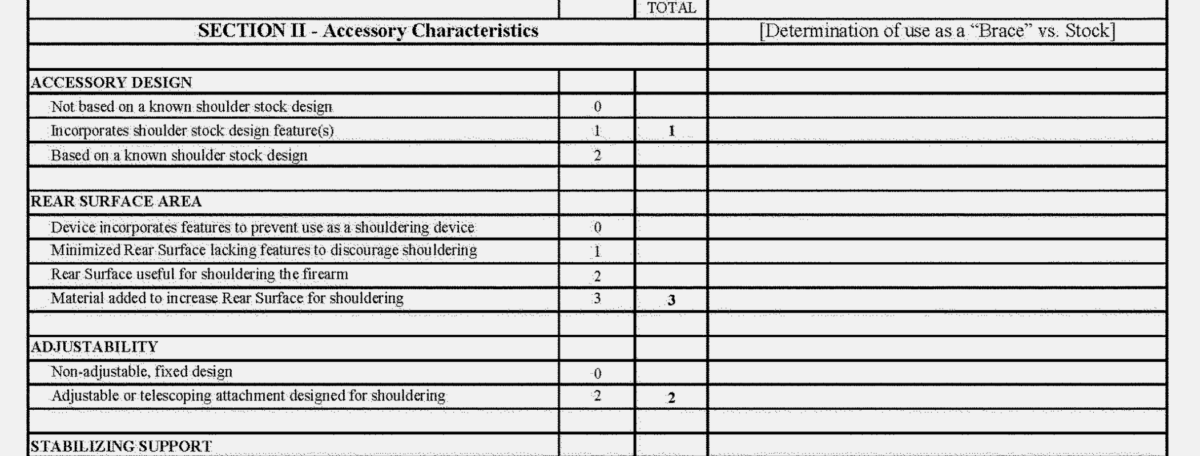
That they’ll allow you to register it was one of the proposals, so you’d have to either register the gun or basically dismantle it… It’s sort of a traditional “turn ’em in or dismantle them” kind of thing, except you’re able to keep them if you register them, pay the tax stamp, and do all the kind of things that are associated with that. This kind of undertaking….I don’t know if they are prepared for that, if millions of people did comply. If millions tried to register their pistol-braced ARs as SBRs, they don’t have the infrastructure to handle that. It would take forever. The system would be completely overwhelmed. I don’t know of any plan to try to deal with that, either.
Q. If it goes the way you anticipate, is this something that can be reversed?
Stephen Gutowski, The Reload – I think the bump stock ban is a good guide as to how this thing could go, which is that the bump stock ban is still being fought in court, however, it’s being fought in court years after it became a felony to possess them.
Yes, there will be a legal fight, and it will probably stretch out. The problem is whether or not you get a nationwide stay put on the law at the Federal level for enforcement while the court case is ongoing. This did not happen with the bump stock ban, and it’s hard to see it happening here, although this impacts far more people.

Q: Moving on, let’s talk about the issues with frames/receivers…
Stephen Gutowski, The Reload – Basically, the ATF wants to expand the definition of what constitutes a firearm that they can regulate. They want to add the language “readily converted to.”
There is a definition of what a firearm or receiver or frame is, and those are regulated parts. If you go and buy just an AR-15 stripped lower, that’s the regulated part on an AR-15…One big problem that has come up in court for them over the past few years is that the written regulations that define what a receiver includes a number of different features that are not present on all firearms receivers, especially guns like the AR-15 that have a so-called “split receiver.”
As you know, there’s a lower receiver and an upper receiver on an AR-15, two separate parts. The problem is the breach is on the upper receiver, not the lower receiver, and the definition for receiver says that it has to have the breach, it has to have the fire control cut-out…so there is a problem with applying this 50-60-year-old definition…It causes a problem in court when they go to prosecute people for selling or possessing stripped lowers when they are a prohibited person, like a felon or something.
The problem is the definition in the regulation is different from how the ATF applies it in practice. So, the ATF wants to broadly expand that definition and reduce how many features a part needs to be labeled a receiver. This could of course, cause the issue of having multiple receivers on a particular gun like an AR. The upper and lower could both be regulated parts, in theory.
In addition, they want to address “ghost guns,” unfinished parts, 80-percent lowers. An 80-percent lower is not considered a “receiver” because you have to make substantial physical changes to the piece in order to have the gun be operable. Well, many gun control activists do not like the idea of “homemade firearms,” un-serialized firearms, 80-percent lowers, so they want to expand the definition to capture more of those items as well. They want to add in the idea that anything that is “readily convertible” to be a firearms receiver IS a firearms receiver, as far as regulations go.
One of the big issues with that is, what the heck does “readily convertible” mean? They don’t really give a good answer to that other than providing court cases dealing with machine guns, as that’s where this language comes from. In the footnotes for the proposal, “readily convertible” could mean if you have access to a full machine shop and you have 8 hours, can you turn this piece into a finished firearms receiver? I think that as far as AR-15 lower goes, you could take that out as far as a bare block of aluminum, right?
Now, they claim that on things with split receivers, they plan on keeping everything the way it is. So, the AR-15 would just keep identifying the lower receiver or the stripped lower as the firearm, and they are NOT going to classify the upper receiver that way. For 80-percents of unfinished firearms parts, they don’t plan on having people serialize aluminum blocks. In their guidance on it, and what kind of effect they claim it will have, they say it will just be used to prevent people from selling homemade gun kits alongside of unfinished lowers, if that makes sense.
The problem is that even if that is true and their intent now, the rule grants them so much more power than that. Like I said, they could make aluminum blocks that are sold as 80-percents or whatever be serialized, go through the background check system, and you’d have to get a federal manufacturer’s license in order to make and sell them. Your 80-percent lower stuff would have to go through the same process as your fully finished firearm would go through.
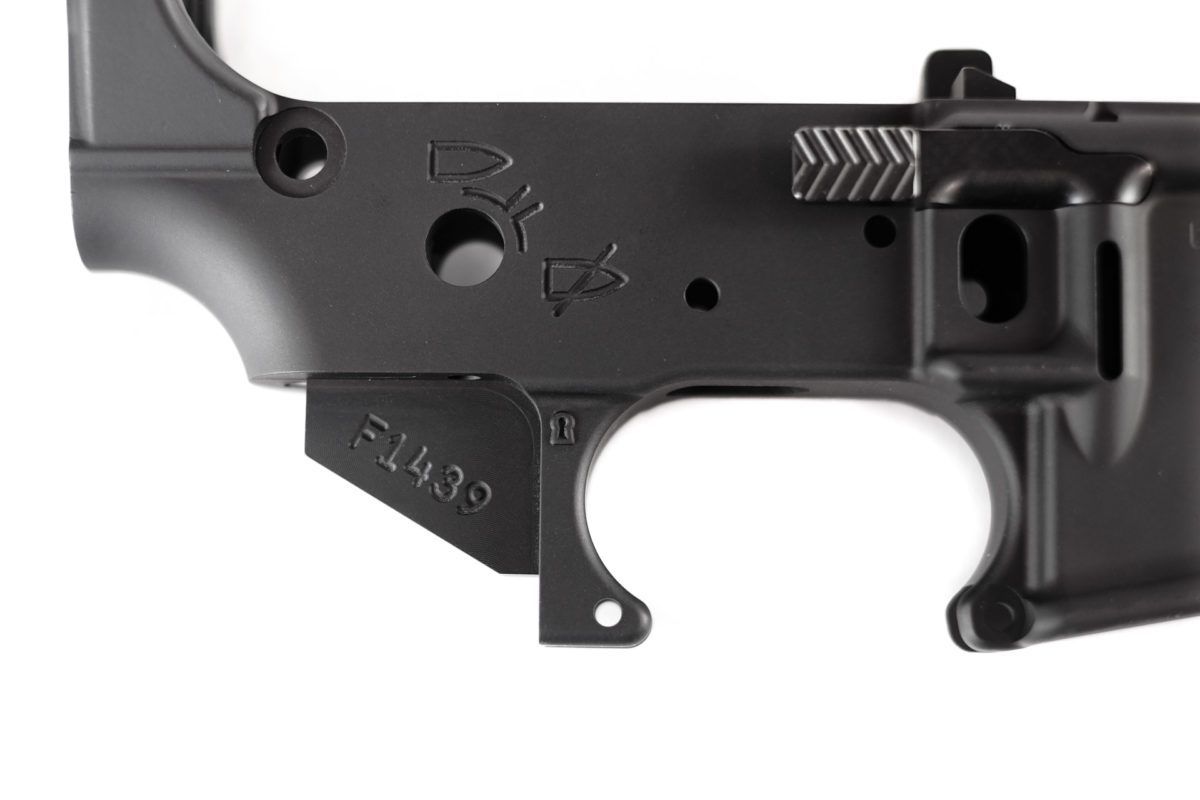
Dirty Bird MCF-A Ambidextrous Lower Receiver
Q: So, what can we do at this point on these issues?
Stephen Gutowski, The Reload – Certainly, there will be legal challenges to all of this. The most direct way someone can affect some of these rules is by encouraging gun rights groups to challenge them in court, or supporting the ones that do. I would say that this is not something that voting in the mid-terms will impact. We’d have to wait for 2024 and that election.
Q: Any other trends you’re following at The Reload that we should be aware of?
Stephen Gutowski, The Reload – I think the changing demographics of gun ownership will remain a big story in 2022. It’s really accelerated, and we are seeing a lot more women and minorities buying guns. We’ve seen a change in attitude in younger people, who have a lot more favorable views on guns and gun rights.
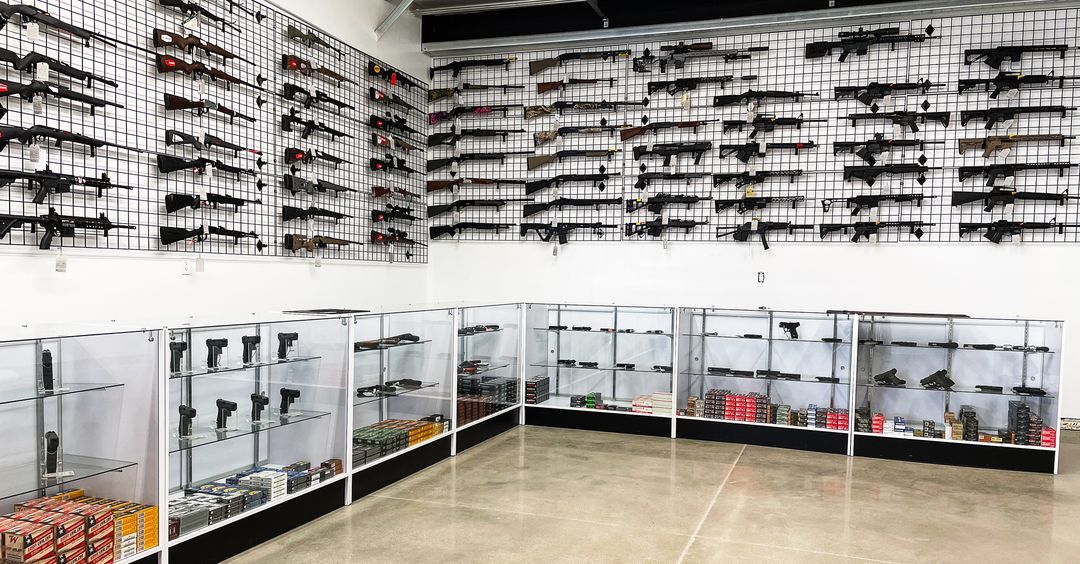
This is going to be something that will be a big deal moving forward on a macro level, and it’s something I am going to continue to follow as I think it has the potential to significantly change the future of gun policy in the United States.
On the 2022 timeframe, I think the Supreme Court and their decision on the gun carry case in New York is going to be huge, whichever direction they choose – whether it is to strike down the law and then institute a clearer standard of review for gun cases moving forward – which is what a lot of gun activists want. Or, they could punt like they’ve done in the past.
Moving on, there’s the rules that we just discussed earlier. How this plays out in practice once they go into effect is going to be a big deal. Enforcement and how it’s handled can cause a tremendous amount of backlash. Finally, there’s the elections in 2022. Will they go like everyone expects, with Republicans taking back the House, maybe the Senate, and if so, how will that impact gun policy?
In closing, I think gun rights advocates have good reason to be optimistic about the long-term view of guns in America, with the shifting demographics, with the increased number of new gun owners, and I think that will have a serious impact on the future of gun policy in the United States – probably in the direction of less strict gun control. However, I doubt it’s something where you are going to see a huge change over the course of the year ahead, or even the next couple of years. It’s a more subtle thing that will happen over a longer period as new gun owners become more interested.
The polarization of guns has been a huge driver of the stalemate on gun policy. It’s become extremely partisan at this point, and I think that is bad. One – It means that you are wholly captured by a single party. This is not good as they are more likely to take you and your support for granted. Two – if the other party gets in power, you have very little recourse in terms of persuading them. So, if the new demographics of gun ownership and these new gun owners we have seen can change the outlook on gun policy, that will have a big impact long-term.
###




